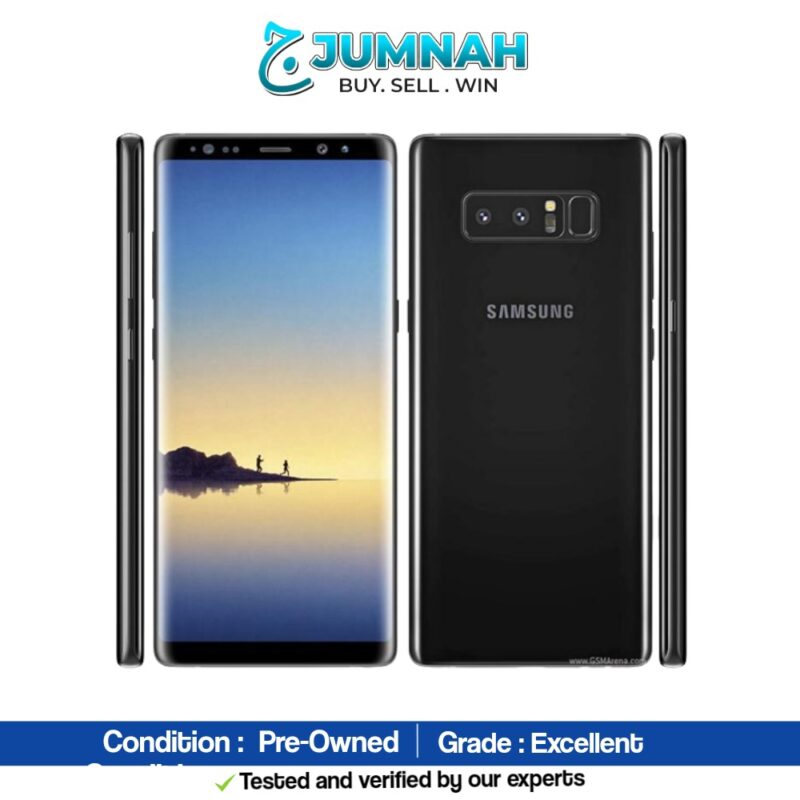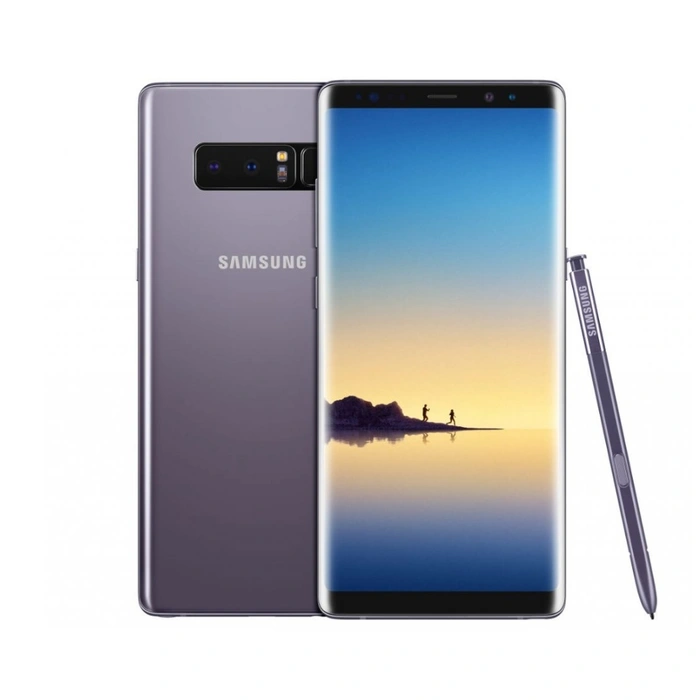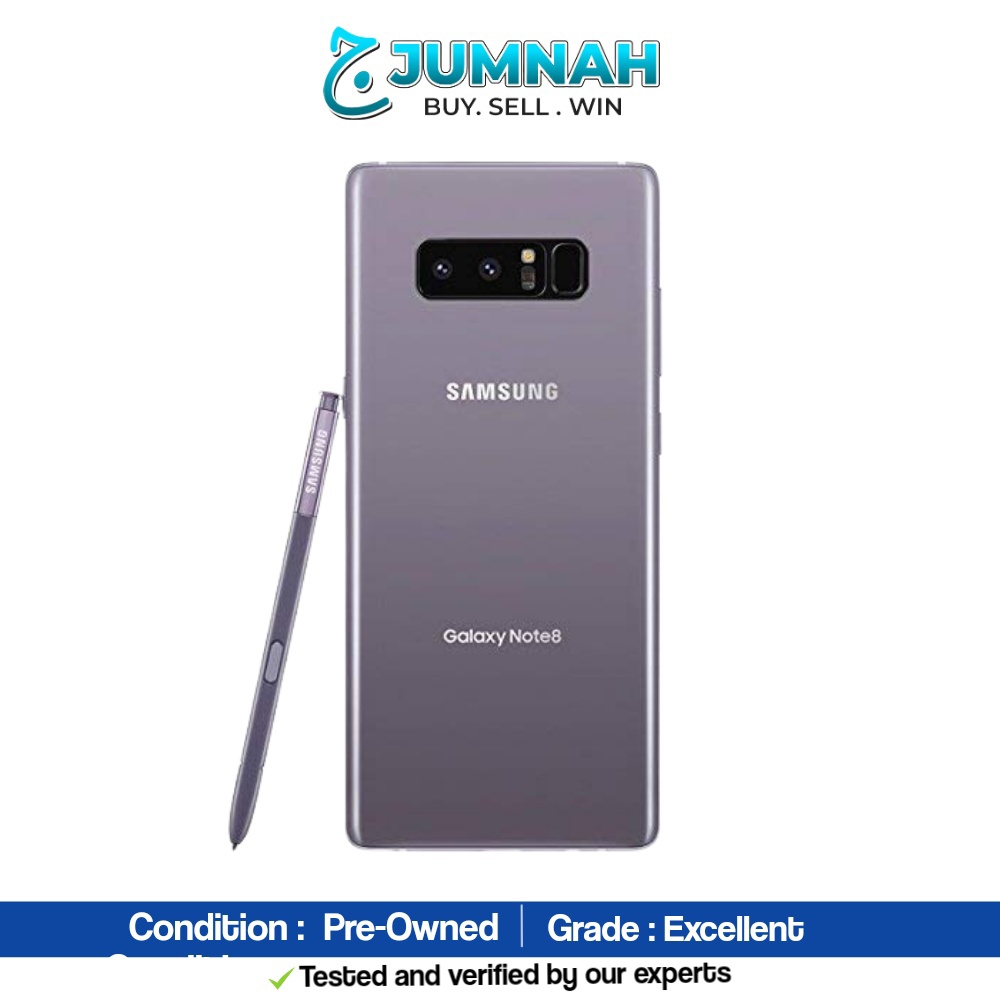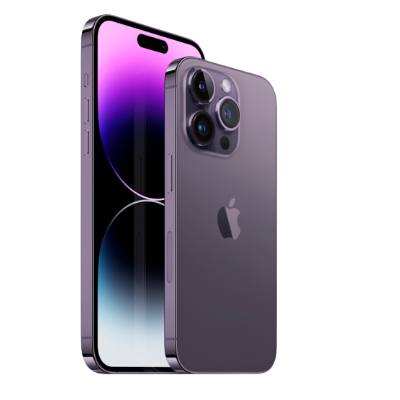The Samsung Galaxy Note 8, released in September 2017, was a flagship smartphone that pushed the boundaries of innovation, delivering a compelling mix of power, productivity, and premium design. With its stunning display, advanced S Pen stylus, and robust performance, the Note 8 offered a comprehensive user experience. In this detailed review, we’ll explore the key features and capabilities that made the Samsung Galaxy Note 8 a standout device in its era.
Design and Build:
The Samsung Galaxy Note 8 continued the legacy of Samsung’s premium design language, featuring a combination of glass and metal construction. Its slim profile and gently curved edges provided a comfortable grip while exuding elegance. The device was available in various color options, including Midnight Black, Orchid Gray, and Deepsea Blue, catering to a range of style preferences.
Display:
At the forefront of the Note 8 was its breathtaking 6.3-inch Super AMOLED Infinity Display. With a resolution of 1440 x 2960 pixels, this display offered stunning visuals with vibrant colors, deep blacks, and excellent contrast. The edge-to-edge design maximized the screen-to-body ratio, providing an immersive viewing experience for multimedia consumption, gaming, and productivity tasks.
S Pen:
The defining feature of the Galaxy Note series, the S Pen stylus, received significant improvements in the Note 8. It offered increased pressure sensitivity and a finer tip, making it more precise and responsive for tasks like drawing, note-taking, and navigating the device. The Screen Off Memo feature allowed users to jot down quick notes without unlocking the phone, enhancing productivity.
Camera System:
The Samsung Galaxy Note 8 featured a dual-camera system, which was a notable addition to the Note series. It comprised two 12-megapixel sensors with optical image stabilization (OIS). The primary lens had a wide-angle configuration, while the secondary lens provided 2x optical zoom. This setup allowed for stunning photography with excellent detail and color accuracy. The Live Focus feature enabled users to create professional-looking portrait shots with adjustable background blur.
Performance:
Under the hood, the Galaxy Note 8 was powered by the Qualcomm Snapdragon 835 or Samsung’s Exynos 8895 chipset (region-dependent), coupled with 6GB of RAM. This robust hardware configuration ensured smooth multitasking and swift app launches. It handled demanding tasks, including gaming and multimedia editing, with ease, offering a seamless user experience.
Battery Life:
The Note 8 was equipped with a 3,300mAh battery, which provided decent endurance for daily use. However, it wasn’t class-leading in terms of battery life, especially considering its large, power-hungry display. Nevertheless, it supported fast charging and wireless charging, allowing users to quickly top up their device when needed.
Software:
The Samsung Galaxy Note 8 shipped with Android 7.1.1 Nougat and Samsung’s custom user interface, Samsung Experience (formerly TouchWiz). The interface was feature-rich and allowed for extensive customization, but some users found it to be somewhat heavy and bloated. Samsung did provide regular software updates to improve performance and security.
Conclusion:
The Samsung Galaxy Note 8 was a powerful and feature-rich smartphone that catered to productivity enthusiasts, creative professionals, and those seeking a premium mobile experience. Its stunning display, versatile S Pen stylus, capable camera system, and robust performance made it a top contender in the flagship smartphone market of its time. While battery life and software preferences might have varied among users, the Note 8’s overall package showcased Samsung’s commitment to innovation and excellence in the smartphone industry.












